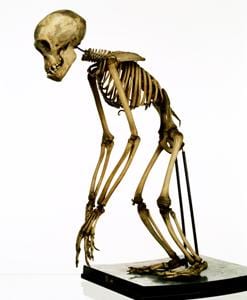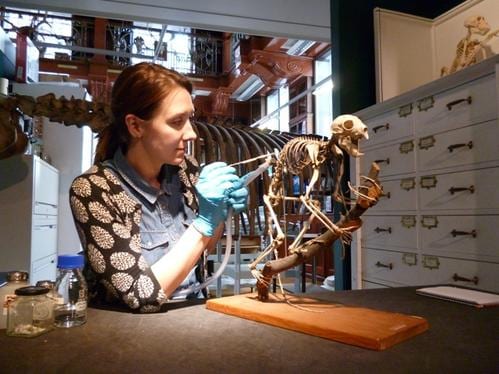Grant Museum starts major project to preserve rarest skeleton in the world
By Jack Ashby, on 24 November 2014
Something very exciting has started here at the Grant. We are undertaking a major project to protect 39 of our rarest and most significant skeletons, some which have been on display in the Museum for 180 years. To help achieve this, we launching our first ever public fundraising campaign – aiming to raise £15,000 to support the costs of this crucial work.
Preserving the rarest skeleton in the world
The specimens include the rarest skeleton in the world: the extinct quagga – an unusual half-striped zebra from South Africa. It is the only mounted quagga skeleton in the UK, and no more than seven quagga skeletons survive globally. The project involves completely dismantling and chemically cleaning the irreplaceable skeleton, and then remounting it on a new skeleton-friendly frame in a more anatomically correct position. The work is intended to secure the long-term preservation of the specimens.
Protecting the uncollectable
The quagga will be the focus and most involved element of Bone Idols: Protecting our iconic skeletons, a major project of conservation across the Museum’s displays. Interventions will range from deep cleaning bones, repairing damaged elements and re-casing specimens through to remounting huge skeletons.
Among the 39 skeletons involved, the Museum will be conserving its critically endangered gorilla, Siamese crocodile and Javan rhino, and endangered tiger, chimpanzee, orang-utan and Ganges river dolphin skeletons. These are effectively uncollectable today. Check out the Flickr album to see some of the specimens involved.
Dismantling a rhino skeleton
The Bone Idols project has begun with the largest single specimen in the Museum – the skeleton of a (hornless) Indian rhinoceros, which, like the quagga, is being completely rebuilt after 100 years on open display. Here’s a video about it, including a time-lapse sequence of the rhino being dismantled:
Why are we doing this?
The Bone Idols campaign is really important for the future of the collection, if we want to continue to use our specimens every day in our fantastically popular programmes with schools and the public, as well as university teaching and research. We were founded in the 1820s as a collection for teaching, and this ethos runs through the Museum today in the way we allow extremely close access to specimens for our visitors.
Visitors will get to see the work in action: as much of the conservation as possible will be performed in the public eye in the gallery. This will shed light on a crucial element of museum work which gets little public attention.
Help us protect the Museum’s most important skeletons
We are undertaking our first ever public individual giving fundraising campaign to meet the costs of the Bone Idols project. The Museum has committed around half of the total funds needed, and has received contributions from Arts Council England’s Museum Development Fund and the Natural Sciences Collections Association, demonstrating the importance of the work to safe-guard these globally important specimens. The Museum is now turning to the public to help raise the remaining funds required to undertake this critical work.
More details of the Bone Idols: Protecting our Iconic Skeletons project, and how you can support it, can be found on the project website: http://www.ucl.ac.uk/museums/zoology/support/BoneIdols
The full press release can be found here.
Jack Ashby is the Manager of the Grant Museum of Zoology
One Response to “Grant Museum starts major project to preserve rarest skeleton in the world”
- 1
 Close
Close




[…] November, we announced that Reg the (hornless) Indian one-horned rhino skeleton was being dismantled and taken away for an […]